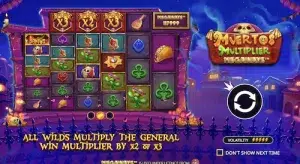Understanding Pai Gow Poker Basics
One common mistake many beginners make in Pai Gow Poker is not fully understanding the importance of setting their hands optimally. In Pai Gow Poker, players receive seven cards, which they must split into a five-card ‘high hand’ and a two-card ‘low hand’. The key here is that the five-card hand must always rank higher than the two-card hand.
Imagine you’re dealt a hand with a pair of Aces, a pair of 8s, and three random low cards. A beginner might be tempted to place both pairs in the high hand for a stronger combination. However, the optimal strategy would be to place the pair of Aces in the high hand and the pair of 8s in the low hand, balancing strength between the two to maximize the chances of winning both hands.
The Role of the Joker
The joker in Pai Gow Poker acts as a semi-wild card. It can be used as an Ace or to complete a straight or flush in the high hand. Understanding how to utilize the joker effectively can transform a losing setting into a winning one. For instance, if holding a hand that needs just one card to complete a flush but also contains a pair, consider if using the Joker to complete the flush could potentially secure a stronger high hand without compromising the low hand.
Example of Joker Usage:
You’re dealt a hand with a Joker, two Aces, two Kings, and three unrelated lower cards. Setting the Aces in the high hand and the Kings in the low hand generally seems like a good move. However, if those three lower cards can form a straight or a flush with the Joker, it might be more beneficial to use the Joker to complete that high-scoring flush or straight in the high hand.
Bankroll Management in Pai Gow Poker
Effective bankroll management is crucial in Pai Gow Poker due to its characteristic as a low-volatility game with frequent ties. It’s not uncommon for players to experience long sessions with minimal wins or losses, which can affect their bankroll sustainability.
A good practice is to set a limit for wins and losses. For instance, decide before playing that if you lose 20% of your bankroll, you will stop playing, and similarly if you win 50% more than your initial amount, you will cash out. This disciplined approach prevents the common pitfall of chasing losses and ensures your gambling remains a fun and safe activity.
Choosing the Right Table:
Opt for Pai Gow tables with lower minimum bets if your bankroll is modest. This will allow you more hands and hence more opportunities to apply your skills without the risk of draining your funds quickly.
Advanced Strategies: Splitting Pairs
Experienced Pai Gow Poker players know that how you split your pairs can be pivotal. If dealt two pairs, the conventional wisdom is to split them unless you have a very strong or very weak pair. For example, with high pairs like Jacks or better, keep them together in the high hand; with low pairs, split them to bolster your low hand.
When to Keep Pairs Together:
Imagine you receive two low pairs and one high card. Place the high card in the low hand and keep the pairs together in the high hand. This strategy maximizes the strength of your high hand, increasing your chances of winning that portion of the game.
Enhancing Your Winning Odds
One often overlooked strategy in Pai Gow Poker is paying careful attention to the House Way, which is how the dealer arranges their cards. By understanding these rules, you can predict with better accuracy how the dealer might split their hands based on what you see with their face-up card. Adjust your hand accordingly if you believe you can outdo the dealer’s potential hand setups.
Control the Bank:
Whenever possible, opt to be the banker. Banking in Pai Gow Poker allows you an edge since you win any copy hands (hands that are exactly the same as the player’s hand). While this requires a larger bankroll to cover all bets in the game, the advantage gained makes it a worthwhile strategy if managed correctly.
With these strategies and a keen understanding of the game’s mechanics, Pai Gow Poker players can significantly enhance their gameplay experience. Remember, consistency in application and disciplined bankroll management are the keys to turning these strategies into successful gaming sessions.

David Garato is a luminary in gaming journalism, renowned for peeling back the curtain on the gaming world with his witty and insightful commentary. A decade into weaving stories from the pixelated edges of indie games to the expansive universes of AAA titles, David’s work is a thrilling blend of analysis and adventure. When not writing, he’s live-streaming, sharing his gaming exploits with an engaged and growing audience. David doesn’t just write about games; he lives them, making him a trusted guide in the gaming community.
















